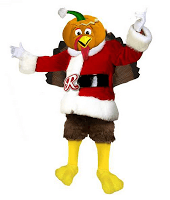
Friday Inspiration (5) – 5 lucruri pe care nu le ştiaţi despre bufniţe
1. Cu toate că despre originea cuvântului “bufniţă” nu am găsit prea multe informaţii, am găsit în schimb nişte lucruri interesante despre denumirea bufniţei în engleză, “owl”. Acest cuvânt, se presupune că provine din cuvântul proto-germanic “uwwalo” sau “uwwilo”, respectiv cuvântul german “Eule”. De asemenea, în Hindi, bufniţa se numeşte “ul” (similar cu germanul “Eule”).
Although I could not find any information on the origin of the Romanian word for owl, which is “bufniţă”, I discovered some interesting facts about the English one. It is presumed that the origins of the word “owl” can be tracked down to the Proto-Germanic word “uwwalo” or “uwwilo”, and the German word “Eule” respectively. Also, in Hindi, the owl is called “ul” (similar to the German “Eule”).
Follow Raluca’s board owls on Pinterest.
2. Bufniţele au apărut în unele dintre cele mai vechi desene rupestre în peştera Chauvet din Franţa. De asemenea, simbolul bufniţei a apărut pe monede, iar în Grecia antică s-au descoperit mai multe artefacte care reprezentau bufniţa.
 |
| Left: mural owl drawing in Chauvet Cave, France (Source), Upper right corner: Owl-shaped protocorinthian aryballos, ca. 640 BC (Source), Down Right corner: Attica. Athens, c. 454-404 BC. Silver “old-style” tetradrachm (Source) |
 |
| The owl Nebula (Source: Wikipedia) |
Ei bine, Odo of Cheriton, un predicator Kentish din secolul al 12-lea oferă următoarea explicaţie într-o fabulă. Se spune că păsările au găsit într-o zi cel mai frumos trandafir şi au început să se certe cu privire la cine va primi floarea şi au decis că cea mai frumoasă floare îi va reveni celei mai frumoase păsări. Uşor de zis, greu de făcut pentru că părerile erau împărţite – unele erau de părere că cea mai frumoasă pasăre este papagalul, altele erau de părere că porumbelul, pe când altele îl susţineau pe păun. Atunci bufniţa a venit şi a spus că ea este cea mai frumoasă. Toate păsările au râs spunându-i că ea este cea mai frumoasă ironie întrucât ea este cea mai urâtă.
Since they couldn’t make up their minds, the birds decided to postpone their decision for the next morning. However, since it had such a great night vision, the owl stole the rose during the night. The punishment she got the next morning for the other birds was to never be able to fly by day, but she was blessed with a wonderful eyesight.
 |
| Source: Mexican gift box |
- Locuitorii din Samoa cred că oamenii se trag din bufniţe
- Pentru Siberieni bufniţa reprezintă un spirit ajutător
- În Sri Lanka se crede că bufniţa este căsătorită cu liliacul
- În Afghanistan se crede că bufniţa i-a dat omului cremenele şi fierul pentru a face focul, iar în schimb omul i-a dat bufniţei penele
- În Babyoln se credea că o amuletă în forma de bufniţă proteja femeile în timpul naşterii
- În Groenlanda bufniţa îi ghida pe oameni şi le dădea putere
- Irlandezii cred că atunci când o bufniţă intră în casă trebuie omorâtă înainte de a ieşi. Dacă aceasta iese vie din casă, va lua cu ea tot norocul şi fericirea
- În multe culturi bufniţa este văzută ca şi pasărea vrăjitoarelor, unii fiind de părere că acestea sunt mesagerii vrăjitoarelor. Ne putem acum explica de ce J.K. Rowling a ales bufniţele pe post de mesageri în Harry Potter, nu-i asa?
- The Samoans believe that the people evolved from owls
- The owl is a helpful spirit for the Siberians
- Sri Lankans believe that the owl is married to the bat
- In Afghanistan it is believed that the owl gave the man flint and iron thus helping him discover the fire, and in return the owl got its feathers
- In Babylon it was believed that an owl amulet would protect women during childbirth
- The owl guided people and gives them strength, or that’s what they believe in Greenland
- The Irish think that when an owl enters a home, it has to be killed before it gets out. If the owl exists a home alive, it is said that it will take all the good luck and the happiness with it
- Also, many cultures see the owl as the witch’s bird, some thinking that they are the messenger of the wizards. Knowing this, we can understand now why J.K. Rowling chose owls as the mess angers in Harry Potter, can’t we?
(Re)Surse:









One Comment
Andreea
Ca si completare la punctul 1: din copilarie imi amintesc ca ii mai spuneam Uhu bufnitei, in germana 🙂